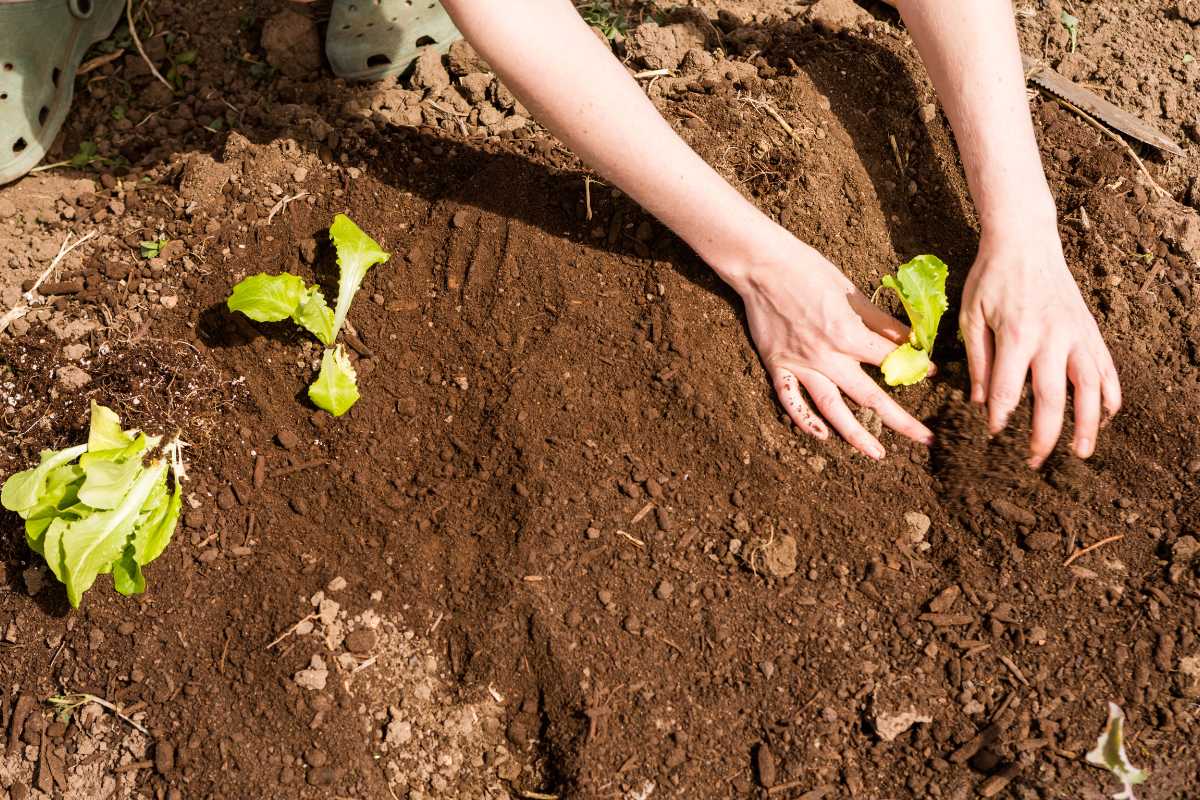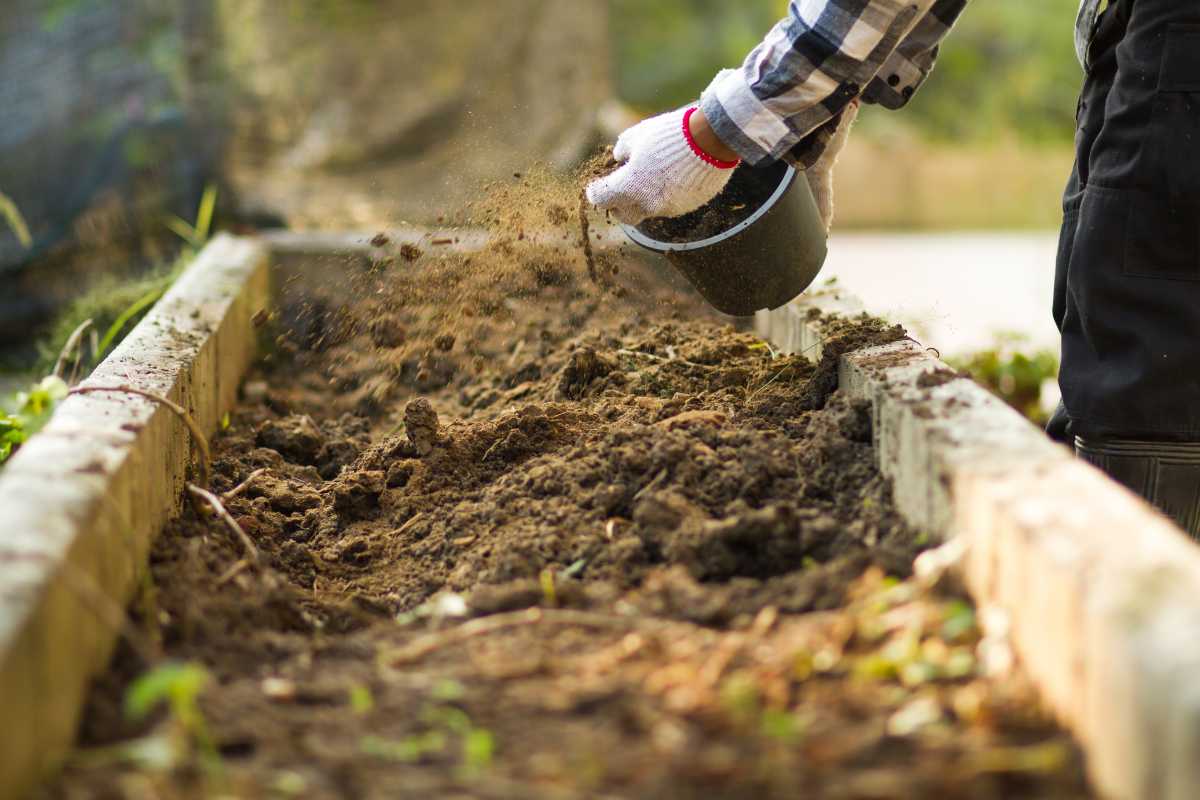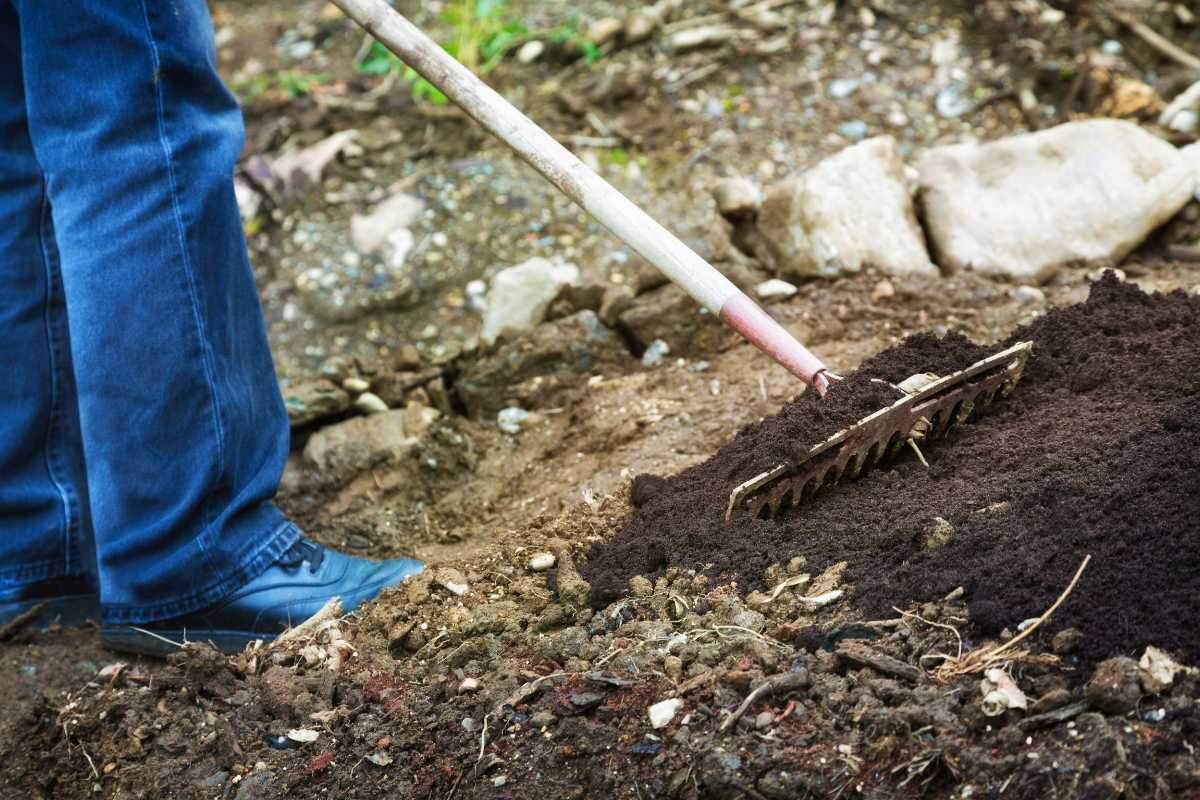If you’re starting a garden, you may need to add or supplement your existing soil. But what soil should you go for?
There are many soil types and varieties out there, from potting mixes to compost. At the “top” is Topsoil, the layer of soil that sits above all the other soil in your garden and lawn. It’s usually only a depth of 5 to 10 inches down.
In this article, I’m going to discuss topsoil, when it should be used, and how it is differentiated from garden soil.
- Related: Soil Guide
What is Topsoil?
Topsoil is the uppermost layer of soil found in most gardens. This layer can vary greatly depending on where you live.
In some areas, like California, topsoil is very thin and sandy. Other places have thick layers of clay. The thickness of topsoil also varies with climate.
For example, if you live in an area with lots of rain, then you will likely find more organic matter than in drier climates.
The topsoil layer is where most nutrients lie before being delivered to plants when watered. That’s why the soil quality and soil composition are important when it comes to topsoil.
Natural topsoil is made up of organic material and eroded rock that builds up on the earth’s surface. The organic matter includes decaying plant material such as leaves, grass clippings, manure, straw, wood chips, etc.
It can be primarily clay, silt, or sandy soil, but the most desirable type of topsoil is a mix of all three. This kind of soil is referred to as loam soil.
While topsoil does contain some nutrients due to organic matter, it is rarely used as a soil amendment. It is probably the cheapest type of soil you can buy, so it’s mainly used for landscaping and filling in holes.
Topsoil vs Garden Soil

Garden soil is basically topsoil with added nutrients.
You can usually find different varieties of garden soil with different additives depending on the types of plants you are growing.
Garden soil is usually used as an amendment to soil to help your pre-existing soil condition and health. Garden soil is usually more expensive than topsoil.
If you want to start a garden somewhere that has no existing soil, then the ideal thing to do would be to mix topsoil and garden soil.
If you add the topsoil first and layer the garden soil on top, the added nutrients from the garden soil will be watered into the topsoil underneath.
Read a full comparison of Topsoil vs Garden Soil here.
How to Use Topsoil

Topsoil can be used in a variety of ways. If you are already composting, you can mix your topsoil with compost to create your own garden soil or potting soil.
Primarily, topsoil is used for landscaping, creating levels and filling in holes.
It can also be used to create raised beds, new garden beds or boarders, or to cover an area that has no existing soil.
When using topsoil, make sure not to use too much at once, because excess topsoil could cause problems by compacting the ground below. You may need to spread less topsoil over larger areas.
How to and Where to Buy Topsoil?
If you are buying topsoil, it would have been harvested and then treated to remove rocks, unwanted bugs and seeds. You have different options for quality topsoil.
There are different grades of topsoil: Premium, General Purpose, and Economy.
Premium topsoil is the most expensive, and has been processed the most to ensure it is good quality, loamy soil.
General purpose topsoil lays in the middle, and economy topsoil is usually sold ‘as dug’ and may contain weed seeds as well as rocks.
The different types of topsoil are based on the ingredients and texture. That affects your gardening projects, plant life, and what you can grow, like deciding between flowers and vegetables.
When buying large quantities of topsoil, you should always check its quality yourself if you can. Look for root clumps, weeds, how many stones are in it, contaminants like glass and brick.
Ask if all the soil comes from the same source, request a soil analysis, and get any facts and figures in writing.
For this reason, it is best to buy topsoil from a local supplier, which you can visit and examine the soil yourself.
As topsoil is usually purchased in large quantities, it’s not always readily available on sites like Amazon. But there are always a few good online options.
Topsoil Tips

To make sure you use topsoil correctly, follow these tips:
- If you’re adding topsoil to existing soil, clear the area first and then loosen the ground by turning over the top 5 inches with a garden fork.
- If the area is thick with weeds, then they will need to be cleared before laying down the topsoil. A good way of doing this is to lay down a sheet of black plastic during some hot summer days to kill off the weeds. Ensure the plastic is airtight by digging the edges into the ground. After around 4-6 weeks, remove the sheet and till the soil to remove the dead weeds and their roots.
- Do not apply topsoil too thickly. A thin layer works better because it allows air and water to penetrate deeper down into the soil.
- Mix topsoil with other soils before planting. This helps prevent diseases and pests from spreading through the soil.
- After you’ve laid the soil, you’ll want to avoid walking on it too much, as this compacts the earth. Compact soil will make it difficult for the roots of your plants to grow. Add the soil in small heaps and rake it out over the area you want covered.
- Soil is heavy! If you’re working with a large area, consider hiring a mini excavator to help with the heavy lifting.
Topsoil Final Thoughts
While it can be overlooked in favor of other, more nutrient-rich soil, topsoil is the main type of soil that makes up your garden.
If you’re wondering whether to go with garden soil or topsoil, I’d say go for topsoil. You can always dig in compost and other organic matter to add nutrients. This is especially true if you are adding soil to a large area.
You may have heard about topsoil on the news in recent years, as there are reports suggesting that the earth is losing its topsoil quicker than it can form it.
Modern farming practices and climate change are all contributing to topsoil erosion, and topsoil takes around 100 years to form naturally. This is an issue because the majority of the earth’s flora and fauna grow in the topsoil.
Topsoil FAQs
What is topsoil used for?
Topsoil is used for gardening purposes such as growing vegetables, flowers, fruit trees, etc. Topsoil is also used for landscaping projects including building patios, driveways, retaining walls, gardens, flower beds, lawns, etc.
What is enriched topsoil?
Enriched topsoil is made when natural materials are added to regular topsoil. The result is a mixture of rich soil and fertilizer. Enriched topsoils tend to contain higher levels of nitrogen, phosphorus, potassium, calcium, magnesium, and/or other nutrients and minerals. These elements provide additional plant nutritients.
How is topsoil being depleted and what is its importance?
Topsoil is being depleted due to modern agricultural methods which include using chemical fertilizers and pesticides. In addition, urbanization has led to increased pollution and runoff causing water quality issues. As well, deforestation leads to less oxygen in the atmosphere allowing fewer microorganisms to decompose leaves and vegetation. All these factors lead to loss of topsoil.
How do I figure out how much topsoil I need?
Calculate how much topsoil you need by multiplying the garden area’s dimensions in square footage (length x width) by the depth of topsoil needed to get cubic footage needed for topsoil. 2 inches is the layer of topsoil you generally want to spread over the garden bed.
So, if you have a garden that’s 2 feet by 2 feet, that is 4 sq ft. or 576 square inches. Multiply 576 x 2 inches for 1152 cubic inches of topsoil needed. 1152 cubic inches is equal to 0.67 cubic feet (1152/1728), so that is the amount of topsoil needed.
Do I need to add anything else to store bought topsoil?
Store bought topsoil usually contains what you need, but if you want to use the topsoil for other purposes, you can add soil amendments and other things for specific nutrients.

